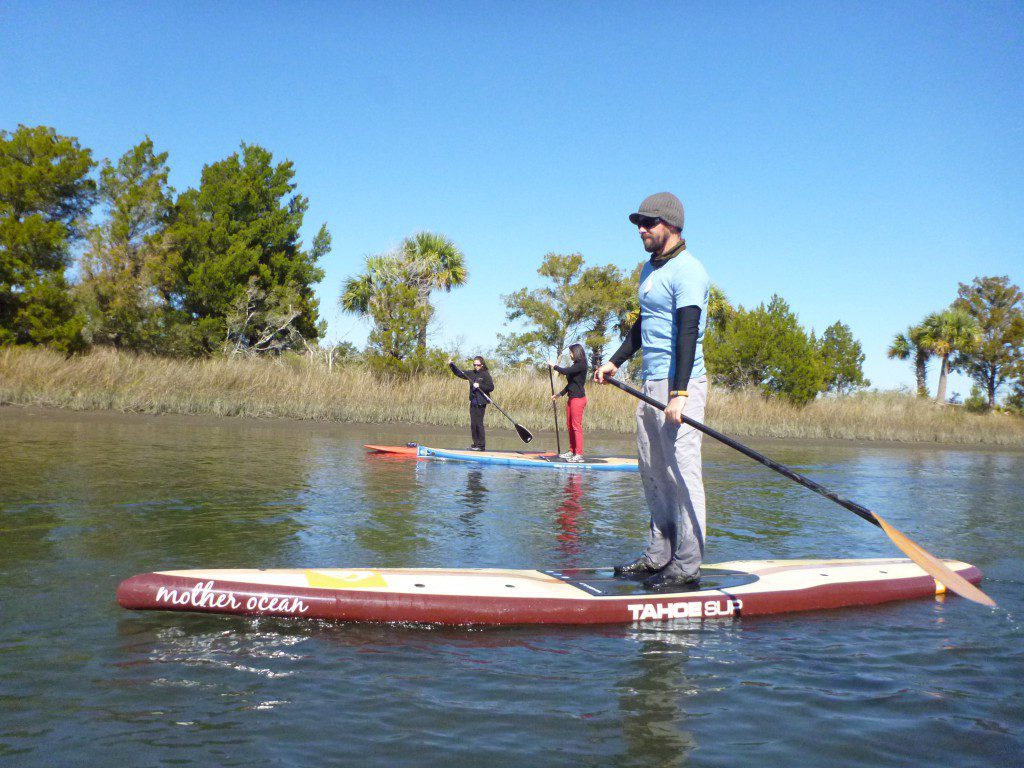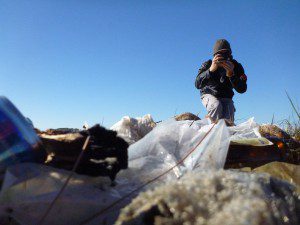Rob Diaz de Villegas WFSU-TV
This week, we take a short break from oysters and the ecology of fear for a new EcoAdventure. We’ll be back in oysters next week, as we look at fear and coastal predators and find out about an ongoing experiment on Florida’s East Coast. It’s an iteration of the tile experiment examined in this video (and which we will explore more fully in a couple of weeks). This is a research method Randall, David & co. perfected during their NSF funded oyster study and which David will soon take to his Apalachicola Bay study. Stay tuned!
 In the video, Justin Riney says, “A lot of people don’t think conservation or history is that sexy.” As a television producer who mainly works to create content on these and similar topics (namely ecology), I appreciate the creativity with which he has designed his mission. Stand Up Paddleboarding (SUP) has become immensely popular over the last few years, and I have to admit that it made for a cool entrance as we waited for Justin to see him appear in the distance and see him paddle his way up to the beach.
In the video, Justin Riney says, “A lot of people don’t think conservation or history is that sexy.” As a television producer who mainly works to create content on these and similar topics (namely ecology), I appreciate the creativity with which he has designed his mission. Stand Up Paddleboarding (SUP) has become immensely popular over the last few years, and I have to admit that it made for a cool entrance as we waited for Justin to see him appear in the distance and see him paddle his way up to the beach.
A few interesting tidbits:
- Justin’s travel plans call for him paddling a relatively short ten miles a day. This allows him to stop in the towns he passes and get to know people along the way. The plan calls for paddling on six out of seven days a week. The extra days come in handy when weather delays him.
-

Justin takes a picture of me taking a picture of the trash found during the Dickerson Bay Ocean Hour cleanup on February 2.
Ocean Hour, the other main initiative of Justin’s Mother Ocean project, has active participation on four of the seven continents (anyone up for Ocean Hour Antarctica?). Ocean Hour is from 9 to 10 AM every Saturday, anywhere that people want to go to a coast and clean up.
- One of Expedition Florida 500’s partners is Viva Florida 500. You can learn more about events celebrating the 500 years since Juan Ponce de León’s arrival in Florida here.
- When Justin was going over what he packed for his yearlong trip, he mentioned books. This intrigued me, as a year’s worth of reading seems like a lot of weight to carry on a SUP. What he does is trade books along the way, usually reading about the places he’s visiting. During his time in Wakulla, he read books by Gulf Specimen Marine Lab’s Jack Rudloe, at whose home he was staying.
- The video above took place entirely on the Saint Marks National Wildlife Refuge, which has become one of my favorite places to shoot (and visit). Dickerson Bay is part of the Panacea Unit, off of Bottoms Road. As you drive down Bottoms, there is a nice sized salt marsh on either side of you in which there are usually plenty of birds (the Great Florida Birding and Wildlife Trail sign on Highway 98 outside of Panacea is the signal to slow down before your turn). I first went there with Jack Rudloe, who dragged a net in the water and gave us a quick lesson in marsh ecology from the animals he caught (and quickly released). The WHO festival took place in the St. Marks Unit, the central unit of the Refuge. There were plenty of birds in Lighthouse Pond, as there were when we visited last year when Migratory Shorebirds were making use of the extensive wetlands on the property.
Music in the piece was performed by Hot Tamale (playing live at the Festival) and we featured the track Future 03 by Necronomikon Quartett.
The kayak we used to tape the community paddle was provided by the Wilderness Way.

